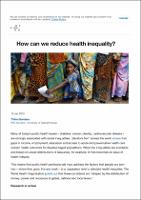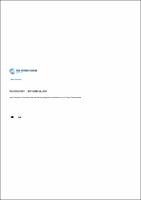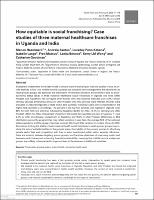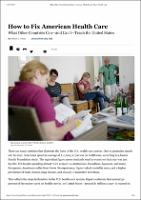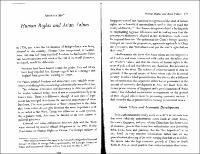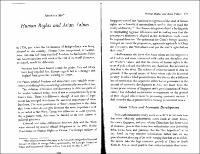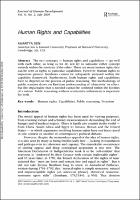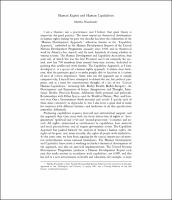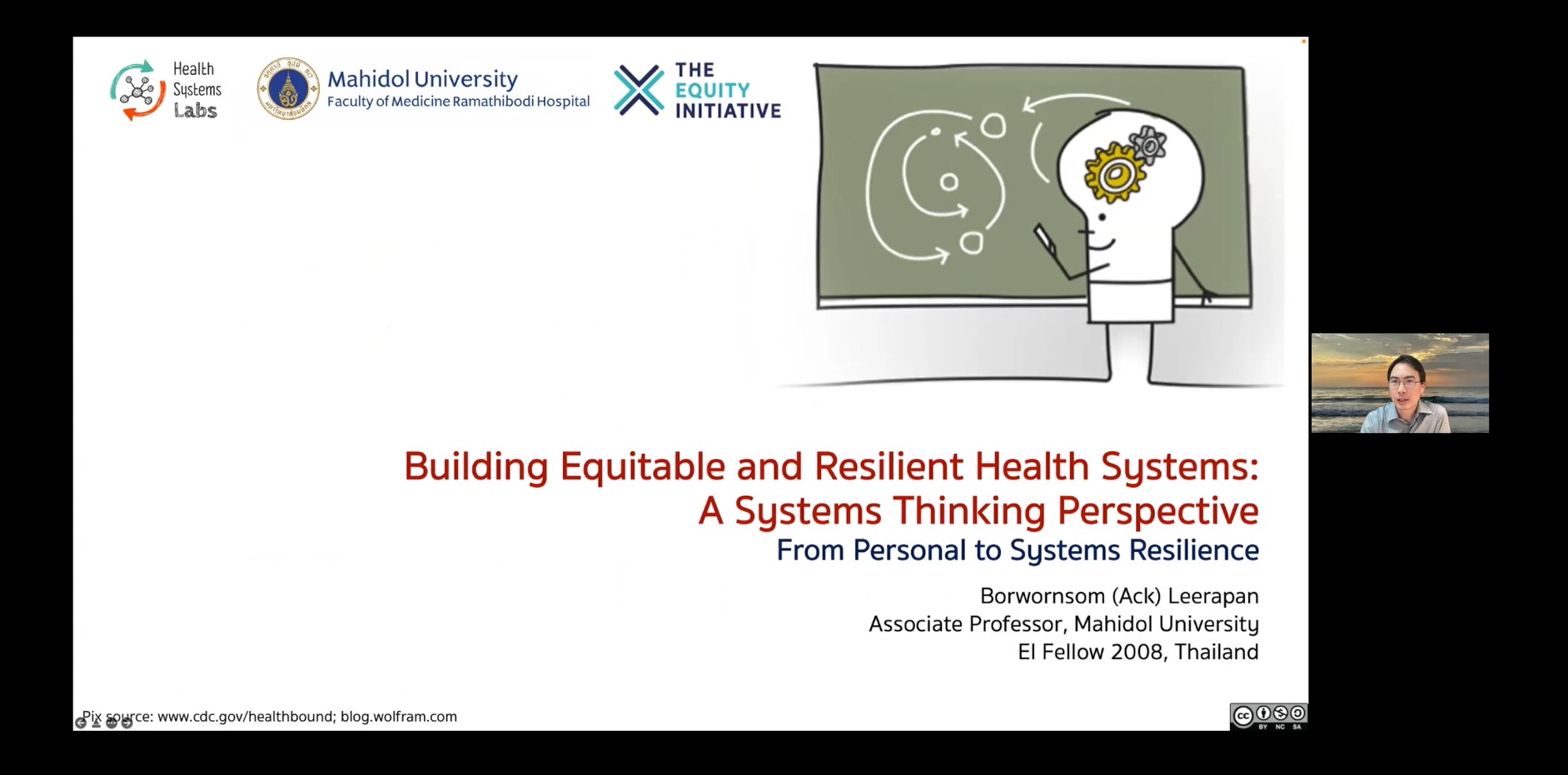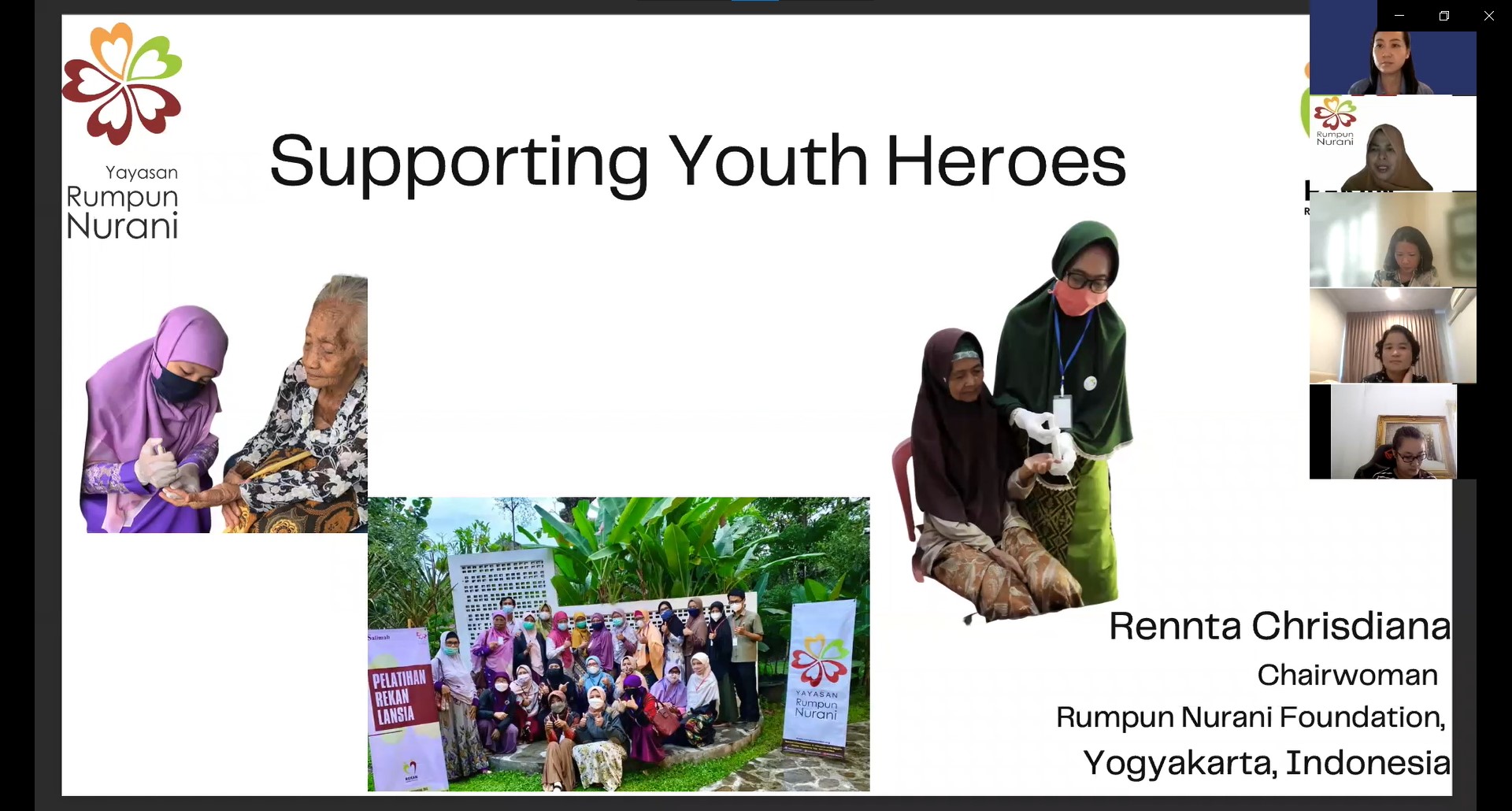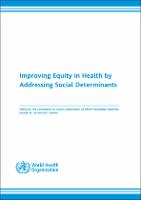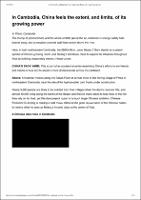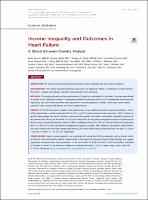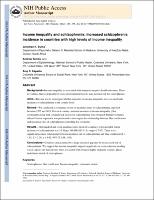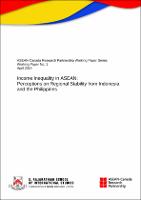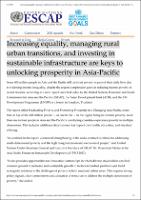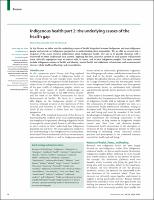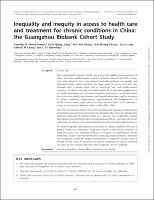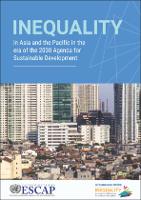Browsing by Title
Now showing items 114-133 of 229
-
How can we reduce health inequality?
(2015-01-19) -
How Countries in Southeast Asia are Working Together to Accelerate Human Capital Development
(THE WORLD BANK, 2019) -
How equitable is social franchising? Case studies of three maternal healthcare franchises in Uganda and India
(Oxford University Press in association with The London School of Hygiene and Tropical Medicine, 2018-04-01)
Substantial investments have been made in clinical social franchising to improve quality of care of private facilities in low- and middle-income countries but concerns have emerged that the benefits fail to reach poorer groups. We assessed the distribution of franchise utilization and content of care by socioeconomic status (SES) in three maternal healthcare social franchises in Uganda and India (Uttar Pradesh and Rajasthan). We surveyed 2179 women who had received antenatal care (ANC) and/or delivery services at franchise clinics (in Uttar Pradesh ... -
Human rights and asian values
(1997)
In 1776, just when the Declaration of Independence was being adopted in this country, Thomas Paine complained, in Common Sense, that Asia had “long expelled” freedom. In this lament, Paine saw Asia in company with much of the rest of the world (America, he hoped, would be different). Singapore warned that “universal recognition of the ideal of human rights can be harmful if universalism is used to deny or mask the reality of diversity.” The Chinese delegation played a leading role in emphasizing regional differences and in making sure that the ... -
Human Rights and Asian Values
(Carnegie Council on Ethics and International Affairs, 1997) -
Human Rights and Capabilities
(Journal of Human Development, 2005-07)
The two concepts — human rights and capabilities — go well with each other, so long as we do not try to subsume either concept entirely within the territory of the other. There are many human rights that can be seen as rights to particular capabilities. However, human rights to important process freedoms cannot be adequately analysed within the capability framework. Furthermore, both human rights and capabilities have to depend on the process of public reasoning. The methodology of public scrutiny draws on Rawlsian understanding of ‘objectivity’ ... -
Human Rights and Human Capabilities
(Harvard Human Rights Journal) -
Ideation Caravan by Borwornsom Leerapan (Cohort 2018)
(The Equity Initiative, 2022-01-23)
Building Equitable and Resilient Health Systems: A Systems Thinking Perspective From Personal to Systems Resilience -
Ideation Caravan By Pham Kieu Oanh (Cohort 2016)
(The Equity Initiative, 2022-01-23) -
Ideation Caravan by Rennta (Cohort 2019)
(The Equity Initiative, 2022-01-23)
REKAN (Community Health Volunteers) for Elderly Innitiative Capacity Building for Community Health Volunters to Promote Well-Being for the Elderly During COVID-19 Pandemic in Yogyakarta, Indonesia. -
Improving equity in health by addressing social determinants
(World Health Organization, 2011)
This recently published book highlights actions to improve health equity based on findings from the nine global Knowledge Networks that were established during the WHO Commission on Social Determinants of Health. Their task was to synthesize existing evidence and identify effective and appropriate actions to improve health equity in nine thematic areas: - globalization; - gender; - social exclusion; - early child development; - urban settings; - employment conditions; - health systems; - public health programs; and - measurement and evidence. ... -
In Cambodia, China feels the extent, and limits, of its growing power
(Washington post, 2015) -
Income Inequality and Outcomes in Heart Failure
(2019)
OBJECTIVES This study examined the relationship between income inequality and heart failure outcomes. BACKGROUND The income inequality hypothesis postulates that population health is influenced by income distribution within a society, with greater inequality associated with worse outcomes. METHODS This study analyzed heart failure outcomes in 2 large trials conducted in 54 countries. Countries were divided by tertiles of Gini coefficients (where 0% represented absolute income equality and 100% represented absolute income inequality), and heart ... -
Income inequality and schizophrenia: Increased schizophrenia incidence in countries with high levels of income inequality
(2014-03)
Background—Income inequality is associated with numerous negative health outcomes. There is evidence that ecological level socio-environmental factors may increase risk for schizophrenia. Aims—The aim was to investigate whether measures of income inequality are associated with incidence of schizophrenia at the country level. Method—We conducted a systematic review of incidence rates for schizophrenia, reported between 1975 and 2011. For each country, national measures of income inequality (Gini coefficient) along with covariate risk factors for ... -
Income Inequality in ASEAN: Perceptions on Regional Stability from Indonesia and the Philippines
Income inequality has been a growing concern since Global Financial Crisis. But how do regional institutions contribute to the debate on income equality? ASEAN’s normative framework is underpinned by the principle of non-interference while ASEAN has a mandate to establish an equitable economic community post 2015. This study examines if regional income inequality is considered a regional problem, and if so, is the concern significant enough to overcome the principle of non-interference allowing ASEAN to play a greater role in policy formation. ... -
Indigenous health part 2: the underlying causes of the health gap
(The Lancet, 2009) -
Inequality and inequity in access to health care and treatment for chronic conditions in China: the Guangzhou Biobank Cohort Study
(2013)
Non-communicable diseases (NCDs) are a large and rapidly-growing problem in China and other middle-income countries. Clinical treatment of NCDs is long-term and expensive, so it may present particular problems for equality and horizontal equity (equal treatment for equal need) in access to health care, although little is known about this at present in low- and middle-income countries. To address this gap, and inform policy for a substantial proportion of the global population, we examined inequality and inequity in general health care utilization ... -
Inequality in Asia and the Pacific in the era of the 2030 Agenda for Sustainable Development
(United Nations, 2018)
This publication reviews the region's inequality trends, challenges and achievements and identifies policy gaps across the three dimensions of inequality--inequality of outcome, inequality of opportunity and inequality of impact. It also discusses the potential impact of rapid and disruptive technological advances, such as machine learning, and puts forward a broad set of policy recommendations for reducing all forms of inequality for the effective implementation of the 2030 Agenda for Sustainable Development and its core tenant of "leaving no ...

